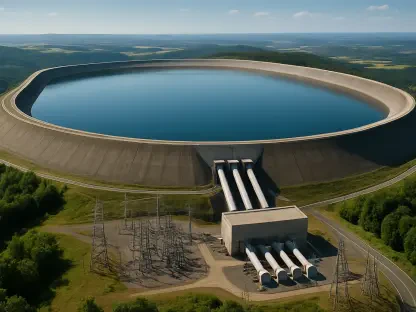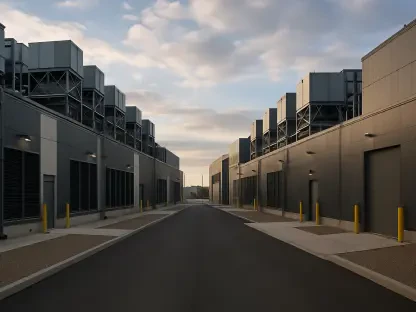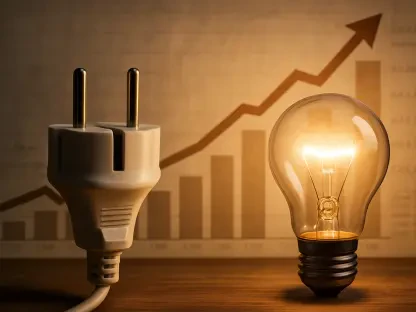A new legislative proposal in the U.S. Senate has sparked significant debate and interest as it seeks to phase out tax credits for solar and wind energy projects by 2028. This move is proposed by the Senate Finance Committee and aims to accelerate the timeline outlined in the Biden-era 2022 Inflation Reduction Act. The act had originally planned for a gradual reduction and eventual elimination of these credits by 2032. This proposal is about balancing economic priorities with environmental and security concerns, influencing the nation’s energy paradigm and its role in global climate initiatives.
Legislative Proposal and Its Implications
Accelerating the Timetable
The main thrust of the legislative proposal is to speed up the existing timetable for phasing out tax credits for renewable energy. The proposed bill outlines a gradual reduction of both Investment Tax Credits (ITC) and Production Tax Credits (PTC) starting immediately, with an annual decrease until their full cessation by the year 2028. The legislative shift also mandates a 60-day deadline for the commencement of construction to qualify for credits, thereby tightening the existing regulations. Additionally, the proposal includes measures to limit credit transferability and impose restrictions on foreign ownership of renewable energy assets. This approach is designed to encourage domestic investment and foster a more competitive energy market.
Diverging from Previous Legislation
While the proposal reflects a continuation of a restrictive trend, it is slightly less stringent compared to previous iterations. Nonetheless, it diverges significantly from the original Inflation Reduction Act. The 2025 decision marks a notable shift in the U.S. policy landscape by accelerating the curtailment of financial incentives that have long supported the solar and wind sectors. This shift is poised to transform market dynamics, compelling renewable energy technology developers to adapt quickly to diminished subsidies. As the Senate deliberates, the proposal has ignited conversations about the future of renewable energy expansion and the feasibility of its integration into the broader power grid without governmental financial support.
Weighing Economic and Environmental Factors
Supporters Claim Technological Maturity
Proponents of the bill argue that solar and wind technologies have reached sufficient maturity to thrive without subsidies. They contend that continuing the tax credits distorts energy markets, ultimately leading to increased consumer costs. According to its supporters, the elimination of these credits will lead to a level playing field where renewable energy can compete fairly against traditional energy sources such as coal and natural gas. They believe this will invite innovation, improve efficiency, and drive down costs, benefiting consumers in the long run. Additionally, advocates assert the potential for stabilizing energy prices, which can lead to broader economic benefits across various sectors.
Critics Warn of Potential Risks
Despite arguments in favor, critics caution against the hasty removal of these financial incentives. They warn that the proposal could result in significant job losses, hinder growth in the renewable energy sector, and cause a rebound in fossil fuel dependence. By potentially stunting the expansion of wind and solar infrastructure, opponents express concerns that the U.S. could jeopardize its climate goals. They emphasize that reduced reliance on renewables could threaten national security by making the country more susceptible to fluctuations in fossil fuel markets. Detractors argue that the proposed timeline might not allow sufficient development of alternative energy infrastructure necessary to maintain energy independence and sustainability.
Balancing National Interests
Navigating Institutional Tensions
The fervent debate surrounding the proposal underscores an intricate balance between economic interests, environmental goals, and national security considerations. Proponents and opponents bring valid arguments to the table, demonstrating the complexity of integrating economic and environmental policies. The legislation’s outcome could redefine America’s renewable energy landscape and its commitment to international climate accords. Lawmakers must navigate these challenges while ensuring mobility and security within the energy market. The deliberations mirror broader institutional tensions as stakeholders seek to reconcile conflicting priorities within a rapidly evolving global energy market.
The Broader Impact on Energy Transition
A fresh legislative proposal in the U.S. Senate is generating considerable debate and attention as it aims to phase out tax credits for solar and wind energy projects by 2028. Introduced by the Senate Finance Committee, this initiative seeks to hasten the schedule set out by the 2022 Inflation Reduction Act from the Biden administration. Originally, the act aimed for a phased reduction and eventual discontinuation of these tax credits by 2032. This proposal is about balancing various economic priorities with pressing environmental and security concerns. It stands to significantly impact the nation’s approach to energy, reshaping its paradigm as it engages with global climate initiatives. The move is seen by many as a pivotal factor in determining the United States’ commitment to sustainable energy and its strategic position in a rapidly changing global landscape, effectively steering the future path of American energy policy and its influence on international environmental goals.









